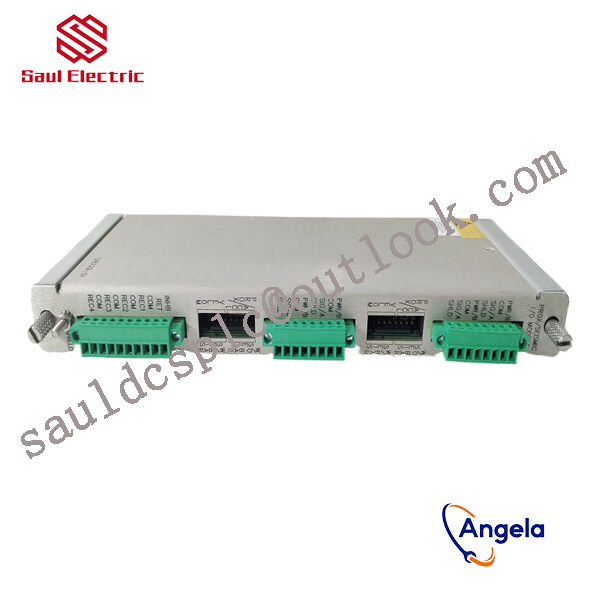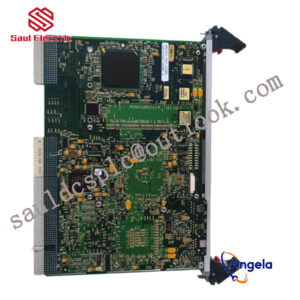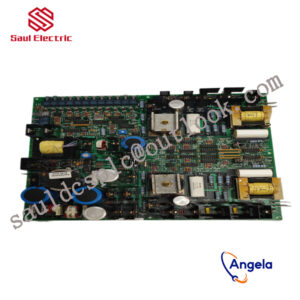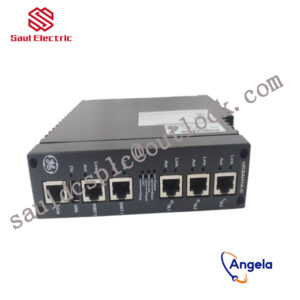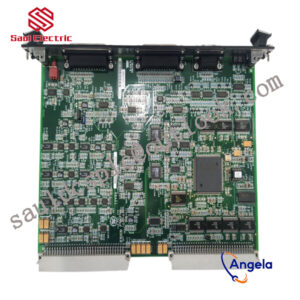Description
- BENTLY 130539-30 gateway is designed with multi protocol compatibility and modularity, seamlessly connecting industrial systems,
- operating at a wide temperature range of -40 ° C to 85 ° C, supporting 8-channel rotating equipment monitoring,
- remote configuration to improve efficiency, and ensuring stable power and automation.
It can connect the Bently Nevada 3500 system with other control systems or host computers to achieve data interconnectivity.
thus achieving integration with other industrial control systems.
Although it was established only a few months ago, ABB Future Lab has already cooperated with Huawei to complete the AI training of garbage sorting robots in two months. This robot uses AI technology based on Huawei chips and uses industrial cameras to sort objects.Obviously, adjusting the business model and organizational structure is an important reason why ABB has always been at the forefront of the industry.From technology iteration to application implementation, ABB aims to provide complete solutionsAs a pioneer in manufacturing automation and digitalization, ABB”s products in the automation field are constantly improving, and its application industries are also expanding.In Alf”s view, the structure and construction of automation have not changed much in the past 30 years. From signal collection and information transmission to work scenarios or operational interfaces, the flow of information in automated systems has basically not changed.But the arrival of 5G may change the way information is transmitted between devices. 5G’s characteristics such as large capacity, high reliability and low latency make it possible to realize independent connections between devices. If real-time mainline connection can be achieved and installed on the cloud or platform, it will be a more disruptive application.5G will not only change the way ABB operates, but is also likely to introduce digitalization into the industry, including digital operation and maintenance. ABB has launched an industrial Internet solution called ABB Ability, which firstly provides a platform, and secondly, it includes all ABB”s digital cloud products, such as equipment industrial solutions and transportation solutions.In addition to digitization, another focus of Alf is the autonomy of machines. He took the autonomous management of autonomous driving and warehousing as examples to think about the development process of machine autonomy – from human operation to machine operation, and ultimately to autonomous implementation and testing without the need for humans at all.For ABB, in addition to popular autonomous driving technology, industrial production scenarios also have strong demand for the autonomy of machinery and equipment, such as autonomous docking of ships and the mining industry. In some industrial scenarios represented by mining, toxic gases and substances in the working environment are harmful to the human body, so equipment is required to have the ability to enter and leave the mine independently. ABB first needs to study the value proposition of these businesses, discover potential applications, and then discover in which fields it can be applied.A technology close to autonomy is artificial intelligence. Since its birth in the 1960s, it has been attracting people”s attention, and there have been endless discussions about “robot replacement”. After decades of development, related technologies have gradually matured, and more and more AI technologies have begun to be discussed in the application field. The products and technologies of leading manufacturers such as ABB have attracted much attention.ABB has been applying AI technology to its products for 20 years, but its current mature products are mainly diagnostic applications based on traditional statistics. Alf introduced to Yiou New Manufacturing that as part of the diagnostic solution, this technology is mainly used to implement condition monitoring functions. More mature applications are reflected in the automated management of equipment, such as the electronic management of ships.Machine learning is another promising AI technology. At the World Artificial Intelligence Conference at the end of August this year, ABB demonstrated a coffee workbench composed of a two-arm collaborative robot Yu Mi. Through guided programming of YuMi, the collaborative robot can learn and remember the barista”s movements to complete the complete process of making coffee, latte art and delivering it to the audience.In actual implementation scenarios, this technology is used to transform terminals carrying containers. By simulating the location and status of box handling, the collected data is used to train the AI, allowing the AI to know the location of the container, thereby achieving automation.From automation, digitalization, autonomy and artificial intelligence technologies, ABB is not a blind pursuer of emerging technology concepts. It pays more attention to customer needs and actual implementation, and achieves better solutions through different product combinations.There are two major difficulties in balancing R&D and business and implementing solutions.As a commercial company, ABB still needs to consider the balance between R&D investment and revenue. In Alf”s view, they do not have unlimited R&D resources, so they need to focus on finding a balance between improving original product functions and developing new functions. In terms of technology research and development, we also need to try to focus on projects that can bring the greatest value to the company.Regarding the specific implementation of digital solutions, Alf believes that there are currently two main difficulties.The first difficulty is that ABB cannot just develop a general solution, because different industry segments have different needs, so it must design solutions that suit their different needs. ABB not only needs to master knowledge in different fields and different applications, but also needs to consider the availability of data.The second difficulty lies in the use of data, because AI requires a large amount of data training. On the one hand, ABB needs to encourage customers to provide data for training models; on the other hand, ABB also needs to ensure customers the privacy, ownership and security of their data.”Industrial artificial intelligence needs to be combined with models and data. But the most important thing is that we must provide value to customers through the use of AI, otherwise we will just apply technology for the sake of applying technology.” Alf concluded.
3500/45-01-00 159654-01 Bently State Monitoring Interface System
3500/20 125744-02 Bently State Monitoring Interface System
3500/50 133434-01 Bently State Monitoring Interface System
176449-01 BENTLY series: 3500 communication gateway module
3500/15-05-00-00 3500 series front card and rear card
126648-02 Mechanical vibration monitoring system
3500/50-01-00 Belonging to the Bently Nevada 3500 series
3500/70M 140734-09 Belonging to the Bently Nevada 3500 series
3500/53M Bently State Monitoring Interface System
135489-04 3500 series front card and rear card
3500/42 125672-02 BENTLY series: 3500 communication gateway module
3500/92 136188-02 Belonging to the Bently Nevada 3500 series
3500/50-01-00-00 3500 series front card and rear card
200200-05-05-05 BENTLY TSI system module
3500/42M 140482-01 Belonging to the Bently Nevada 3500 series
1900/65A-01 -01-01-00-00 3500 series front card and rear card
3500/50 133434-01 BENTLY series: 3500 communication gateway module
3500/22-01-01-CN 3500 series front card and rear card
1701/10-01 3500 series front card and rear card
330104-00-05-10-02-00 Bently State Monitoring Interface System
1900/65A-00-04-01-00-00 Mechanical vibration monitoring system
128277-01 Bently State Monitoring Interface System
132419-01 3500 series front card and rear card
149369-01 BENTLY series: 3500 communication gateway module
3500/61-01-00 3500 series front card and rear card
167699-02 3500 series front card and rear card
3500/77M 3500 series front card and rear card
9200-01-05-10-00 Belonging to the Bently Nevada 3500 series
3500/32 125712-01 BENTLY series: 3500 communication gateway module
330854-040-24-00 Mechanical vibration monitoring system
330850-50-05 3500 series front card and rear card
3300/65 Bently State Monitoring Interface System
3500/15 114M5335-01 Belonging to the Bently Nevada 3500 series
330180-90-05 BENTLY series: 3500 communication gateway module

